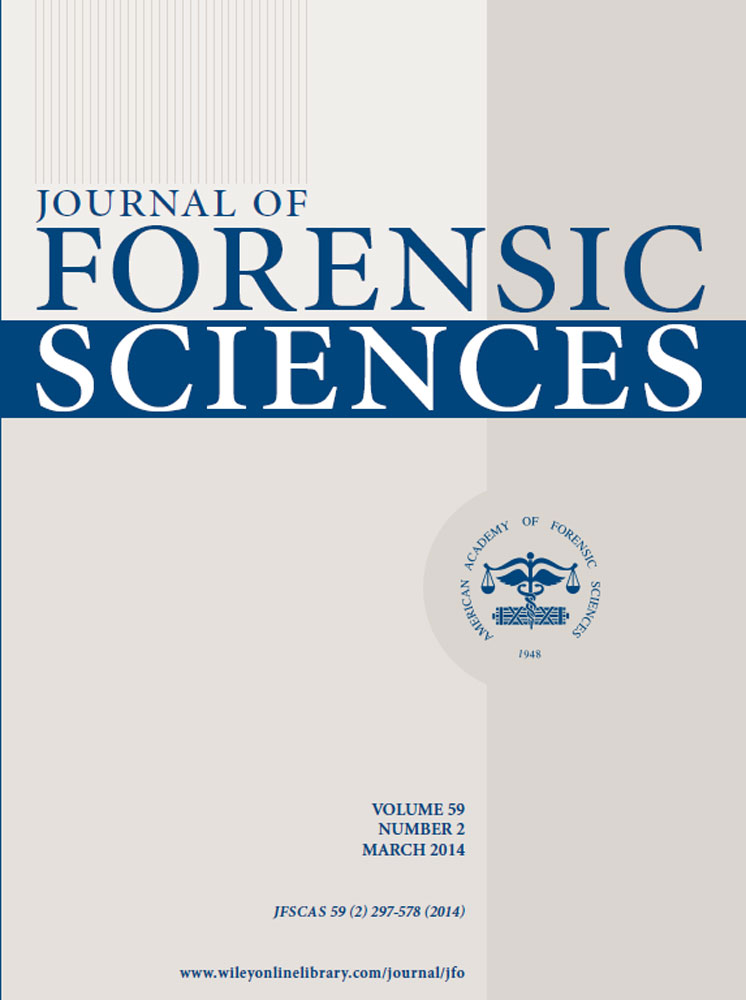LCMS Analysis of Fingerprints, the Amino Acid Profile of 20 Donors†
Abstract
The analysis of amino acids present in fingerprints has been studied several times. In this paper, we report a method for the analysis of amino acids using an fluorenylmethyloxycarbonyl chloride-derivatization for LC separation and MS detection. We have obtained good results with regard to the calibration curves and the limit of detection and LOQ for the target compounds. The extraction of the amino acids from the substrates used proved to be very efficient. Analysis of the derivatized amino acids enabled us to obtain full amino acid profiles for 20 donors. The intervariability is as expected rather large, with serine as the most abundant constituent, and when examining the total profile of the amino acids per donor, a characteristic pattern can be observed. Some amino acids were not detected in some donors, or fell out of the range of the calibration curve, where others showed a surprisingly high amount of material in the deposition analyses. Further investigations will have to address the intravariability of the amino acid profiles of the fingerprints from donors. By the development of the analytical method and the application to the analysis of fingerprints, we were able to gain insight in the variability of the constituents of fingerprints between the donors.




